Last Updated on October 28, 2024 by Ellen
We left Danang for Hue to the north by train on a stunning coastline. Vietnam’s Reunification Railway has some of the best views we’ve seen so far on this route.
The trip north was less than 60 miles, but it took nearly three hours as the train hugged the coast for the first half the ride before turning inland through villages, small towns, and farmland. Our tickets cost just over $5 each.



Hue has a totally different feel from the other cities we have visited in Vietnam. It feels more “colonial”, if you will, like Boston or Philly is to the U.S.
Hue is historic. At one point it was the capital of Vietnam. Today it’s known for the citadel, which includes the Imperial and Forbidden purple cities. The site is immense, and surrounded by a moat and thick walls. There are only two ways in or out today. We spent an entire day wandering around this fantastic site.
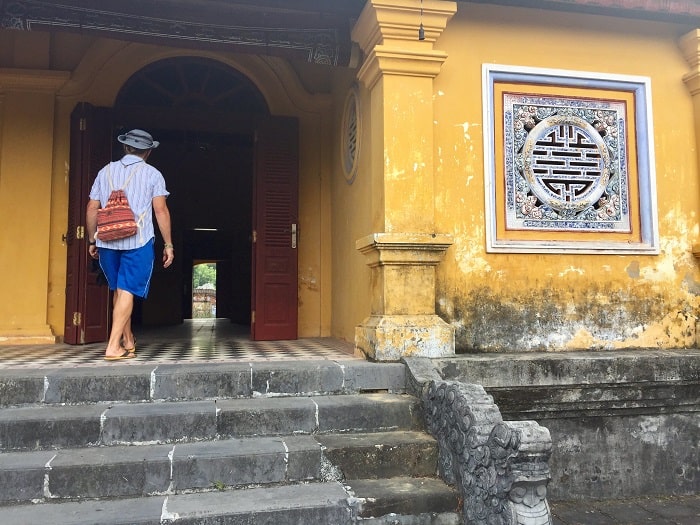
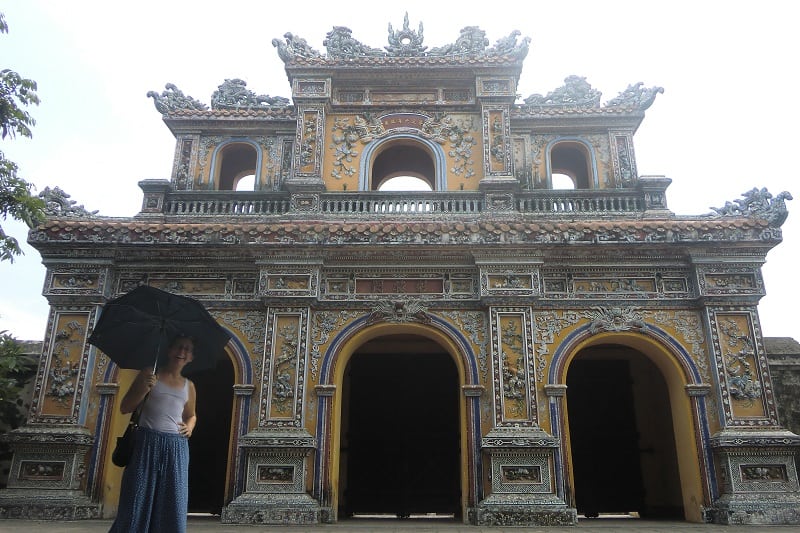
Hue also has famous pagodas, a riverfront walk, and it’s where most tourists stay to take tours of the old demilitarized zone a little further north.
My father spend some time in Hue as a Marine during the war. It was interesting to see the area where he served. He also spent time in Phu Bai, a village on the train ride to Hue, but we didn’t stop there. My interest was mainly along the old highway 9 south of the DMZ. But I’m getting ahead of myself.
Today, Hue is a modern city bustling with students, taxis, tourism businesses. There is a section of town where you can find any range of hotel – from hostel to five-star hotel.
Hue also claims the coffee creation called “salt coffee.”
If there was any drawback to Hue — it’s that it’s hot and there are no ocean breezes. Our lovely accommodations had air conditioning so we cooled off after walking all over town each day.
Just outside Hue, we paid a visit to the famous mission and pagoda site by Buddhist monk Thich Nhat Hanh. We didn’t see him, but the grounds were beautiful. The pagoda was demolished, and a new one is currently under construction, with an opening scheduled in 2020.
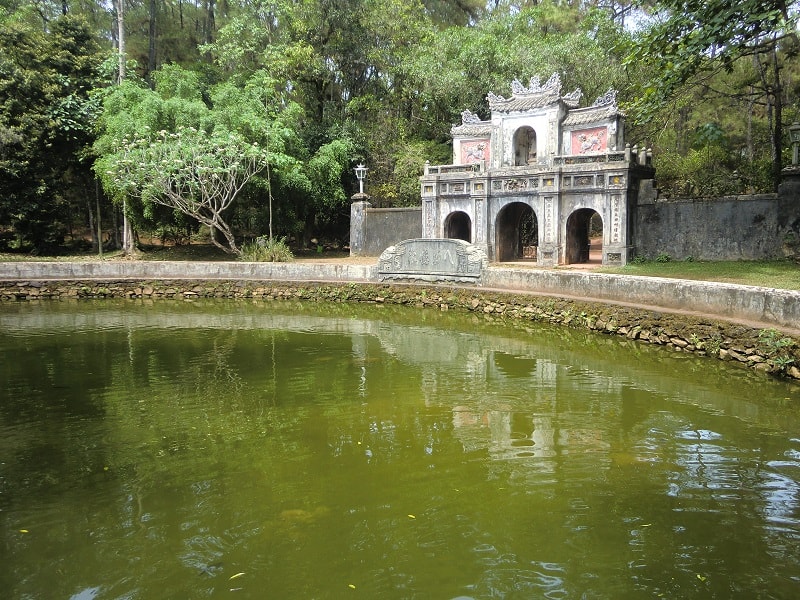
By the way, several U.S. Senators recently went to visit Thay on a trip with their spouses. Did your senator go? Find out here. (American media didn’t cover it – at least, I didn’t see it online anywhere.)
Another famous pagoda is Thien Mu. It’s the one with a garage in the back that houses blue car shown in the famous picture of a monk lighting himself on fire in Saigon in 1963 to protest the way the government treated Buddhists, according to the government.
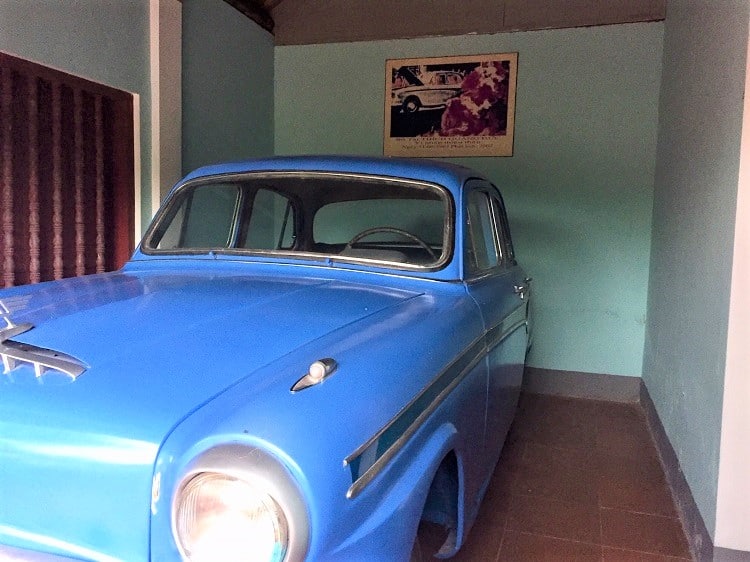
We took a dragon boat to that pagoda since it’s right on the river. Haggle with the boat drivers for the best price or gather a group and to split the cost. The asking rate seemed to be 300,000 dong, or about $13, round trip per boat, not per passenger.
We stayed in the perfect place: Hue Sweethouse Homestay. The owners and their family are wonderful and made us feel right at home. They now have two homestay places. Search the name on booking or Airbnb.
We found the young people to be polite, and eager to practice English. In Hue, where many people go to university, a young man asked us to practice English by having a conversation, and the next thing we know we’ve been yacking for an hour with a large group of intelligent medical students. No one ever mentions the war to us.
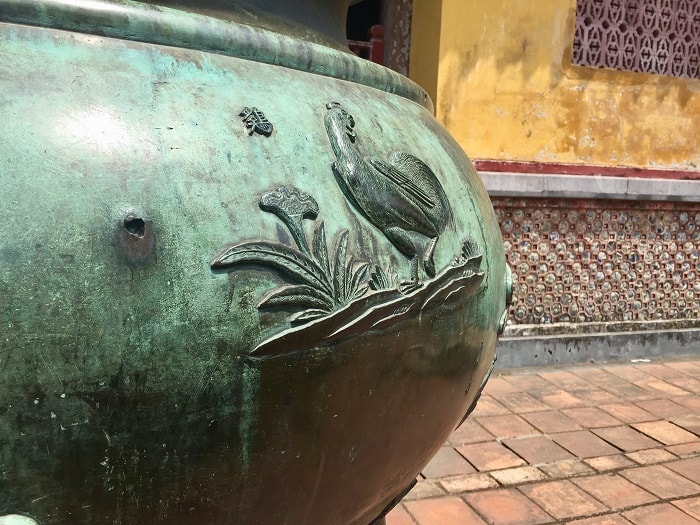
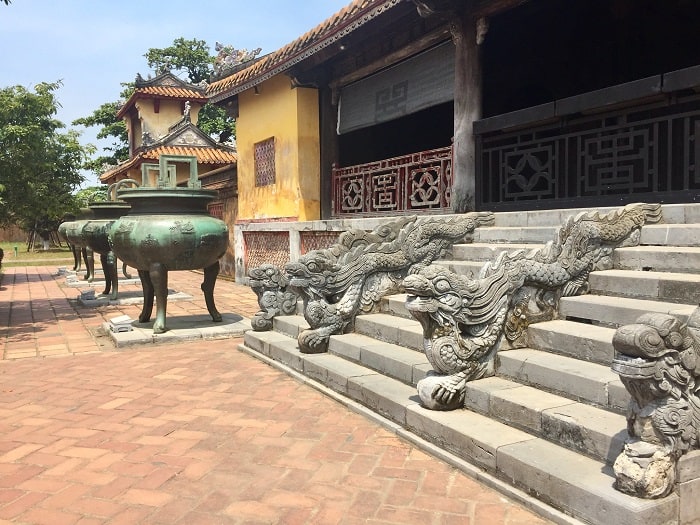
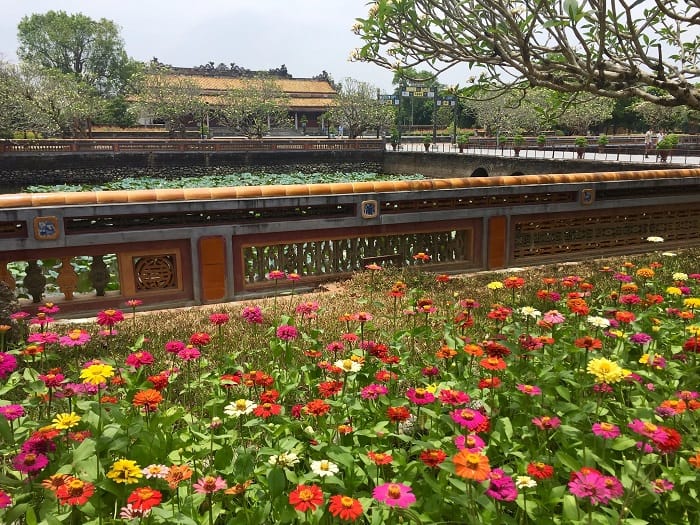
Other than some bullet holes and some destroyed buildings that have long since cleared away in the Imperial and Forbidden cities, and old army war relics by the citadel, there is no evidence there was a war in this city, often fought street by street. When my father was in Hue with the Marines, there was a large Catholic church he had wanted to go into, but never did. So, since I was in town, I went in and sent him pictures and a video of what it’s like inside.
The local story goes the church was badly damaged in the war, and has since undergone major repairs. It used to be the cathedral – but now it’s simply a parish church because Vietnamese Catholics in Hue have built a new cathedral.
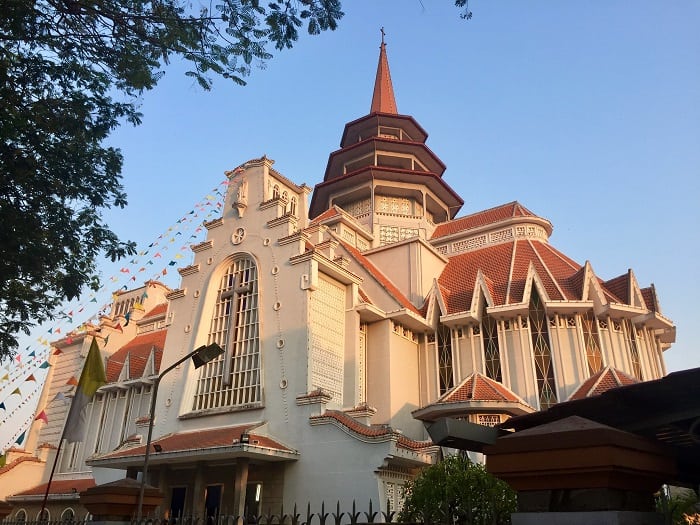
The Vietnam of today is so much different from the one my father saw. My dad landed in Da Nang, spent time in Hue and the region around it, and also in and around the city of Dong Ha and the old village of Cam Lo. Those latter two were next on our itinerary, as we worked our way further north into today’s reunified Vietnam.
Related:
- Things to do in Nha Trang away from tourist crowds
- See Ba Na Hills and the Golden Hand Bridge at a discount
- Cat Ba Island beaches, hikes, and boat rides
Earth Vagabonds Newsletter
🙂

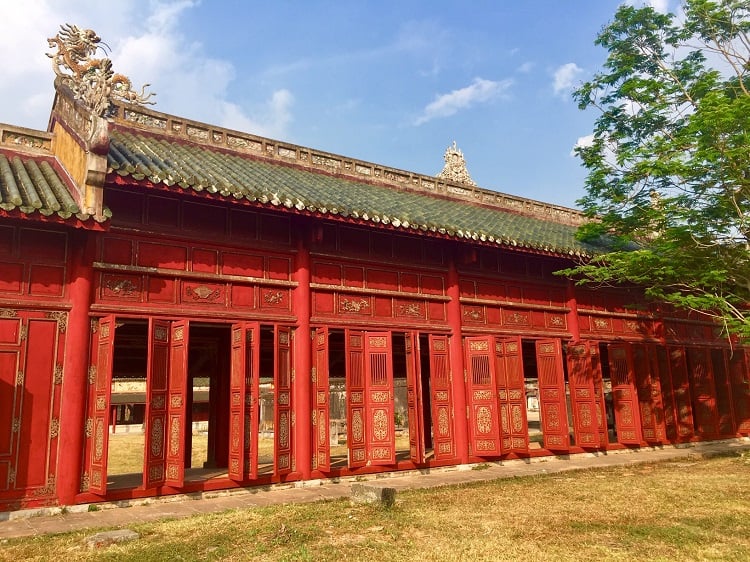
beautiful expression of VN, in words and pictures!
i was able to travel across the country
and enjoy a stay at Tu Hue temple
with Thich Nhat Hanh and his followers
a dozen years ago. 🙂
Wonderful! Thanks! ?
Hey, You have a superb fine aspect, spreading happiness for the nice time you are spending there! Kisses from Loretta and from myself
?